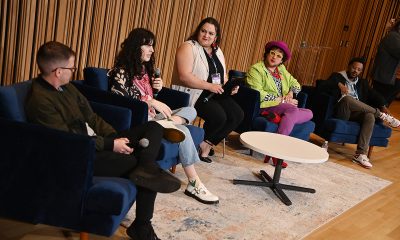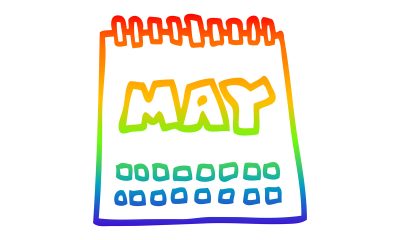a&e features
Awesome Con returns next weekend packed with queer content
Organizers say D.C. much geekier than is often assumed
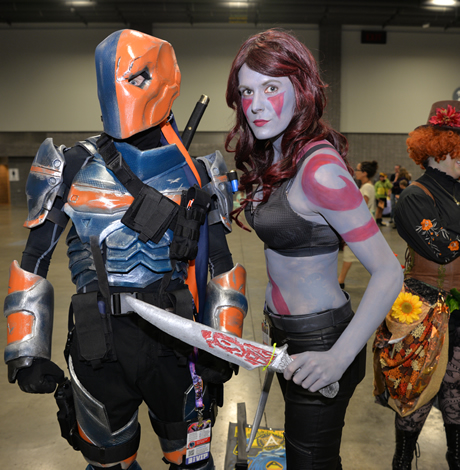
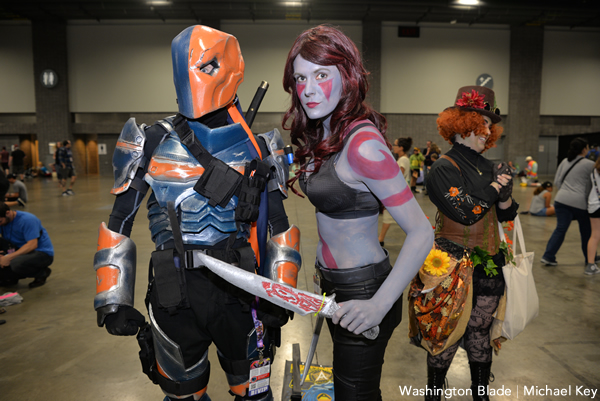
Revelers gather at last year’s Awesome Con in Washington. Attendance has spiked in recent years. About 70,000 attended in 2017. (Washington Blade file photo by Michael Key)
Geek culture fans usually flock to conventions in New York City or San Diego to see their favorite stars and connect with fellow nerd enthusiasts. However, as fan conventions have become a pop culture phenomenon, D.C. has slowly been gaining steam as a convention hotspot.
Awesome Con returns to the Walter E. Washington Convention Center (801 Mt Vernon Pl., N.W.) for its fifth consecutive year on Friday, March 30-Sunday, April 1. For three days, people can indulge in nerdy pleasures featuring hours of celebrity guests, exhibits, panels and connecting with fans of “Star Wars,” “Smallville,” “Guardians of the Galaxy” and more.
Awesome Con founder Ben Penrod, a self-proclaimed “big nerd,” never expected his passion project to become the largest geek event in the D.C. area.
Penrod grew up in Annapolis, Md., with a love for comic books and superheroes that eventually grew into buying and selling comic books on eBay in the late ‘90s to make extra cash for more comic books. In 2009, Penrod went full-time selling comic books and began to travel to conventions across the country. He continued on to found Annapolis Comic-Con and Southern Maryland Comic-Con with Third Eye Comics founder Steve Anderson before Penrod decided to branch into Washington.
“People think of D.C. and they don’t immediately think of fans of comic books and pop culture,” Penrod says. “But the people that you would think of as a typical D.C. resident, like an attorney or a lobbyist or a federal employee or somebody in the military, I think that the representation of science fiction, superhero and comic book fans among those people is so high that Washington, D.C., is one of the best nerd communities in the entire country.”
The first Awesome Con kicked off in 2013 at the Convention Center with an attendance of 7,000 people. The event gained attention throughout the region and Awesome Con 2017 saw a spike in attendance with 70,000 guests.
Over the years, fans were invited to see their favorite celebrities in person for autographs, photo-ops and panels. In the past, the guest list has welcomed stars from hit shows such as “Doctor Who, “Star Trek” and “The Walking Dead.” This year, the lineup includes “Star Wars” breakout star John Boyega, Stephen Amell and out actor John Barrowman from CW series “Arrow” and the “Guardians of the Galaxy” cast including Dave Bautista, Pom Klementieff, Michael Rooker and Sean Gunn.
Penrod says celebrity guests are chosen based on a combination of fan demand and TV shows and movies currently trending. The convention has roots in science fiction, but Penrod admits sometimes he purposely seeks out stars purely for nostalgia.
The cast of ‘90s sitcom “Boy Meets World,” Ben Savage, Rider Strong and Will Friedle, are on the guest list this year. While the show went off the air in 2000, it maintained a strong fan base through re-runs on the Disney Channel.
“It was meant to be this comic book convention with sci-fi, superhero celebrities. But what it’s turned into is this really broad celebration of pop culture and whether that means we’re doing the ‘90s nostalgia stuff with ‘Boy Meets World,’ that doesn’t really have a sci-fi, superhero realm of things, but it definitely fits. But you can’t pinpoint exactly why it fits,” Penrod says.
The convention also includes programming geared toward specific interests and groups.
Future Con, where science meets science fiction, will feature panels such as the “Science of ‘Black Panther,’” “Harry Potter and the Genetics of Wizarding,” “What’s Happening Now to Make the Sci-Fi Space Travel We See in Movies a Reality” and more. Programming is in partnership with the biggest names in science such as NASA, National Geographic and the Smithsonian.
“We didn’t just start Future Con because we thought it would be a good idea,” Penrod says. “We had so much involvement and so much outreach from all these governmental organizations, science-based organizations, whether it was NASA, the Smithsonian, the Science Channel. We had all of these people reaching out to us. We’re like, ‘This is special and nobody else could do this. Except D.C.’”
Awesome Con Jr. offers kids an experience crafted especially for them with character meet and greets with Paddington Bear, Buddy from the “Dinosaur Train,” Ranger Rick, “Dragon Ball Z” characters and the Easter Bunny. In between photo-ops, kids can attend panels such as “Intro Spells for Young Witches and Wizards,” participate in live art contests and play video games.
As for LGBT-specific content, Awesome Con has joined forces with Geeks Out, a non-profit organization based in New York City for the LGBT geek community. Together, they created Pride Alley, both a physical space and group of programming for LGBT patrons.
Pride Alley is part of Artist Alley, which highlights arts, crafts, comics and more from LGBT creators. There are also panels that focus specifically on queer identity and fandom.
“The Queer Gamer Meetup: with D.C. Gaymers” offers a place for LGBT people to meet and play video games on Friday, March 30 at 5:30 p.m. “GAAAYS IN SPAAACE,” is a panel on LGBT representation in “Star Trek” on Saturday, March 31 at 12:30 p.m. “Slash of Our Ancestors,” a panel on the history of same-sex fan fiction, takes place on Sunday, April 1 at 2:15 p.m. Geeks Out will be hosting Snikt: D.C., the official queer after party of Awesome Con, at the Dew Drop Inn D.C. (2801 8th St., N.E.) on Friday, March 30 at 9 p.m.
It also wouldn’t be a convention without cosplay. In addition to the con’s daily cosplay contests, Pride Alley offers the panel “Sexuality in Cosplay: Nuff Said” on Friday, March 30 at 8:45 p.m. featuring representatives from NYC nightlife, an LGBT therapist and cosplayers.
Geeks OUT President Nicole Gitau praises Awesome Con for giving the LGBT community a home at the con.
“The group at Awesome Con, they’re really great,” Gitau says. “They really wanted to increase the visible presence of diversity on the floor. I can only commend them for that. Conventions are known for not always having been the most welcoming of spaces. I think that’s changed a lot in the last few years. It’s nice to see that Awesome Con is really committed to that.”
Penrod says Awesome Con needed Pride Alley because LGBT fans were already engaged in the convention.
“It was important because we knew that community was very well represented in our fans, in our people who are already exhibiting and at the con, and the creators who are making comics, TV and movies,” he says. “We knew that in this world of nerd stuff and geek culture that the LGBT community is a very big part of things. I wanted to take the opportunity to make that a focus at Awesome Con.”
For Gitau, who identifies as queer, the LGBT geek community is a haven she hopes can make the general geek community have “positive associations in their life” of LGBT people and to “think differently about the social climate we’re in right now.”
“One of the fun things about this is to be amidst a group of people who understand not only my cultural references but also my cultural critiques,” Gitau says. “There’s sort of a safety. Geeks, we love things passionately. That is what makes us geeky about a thing. But when you love something you want it to be better. And that ability to have free conversation is what is really exciting for me.”
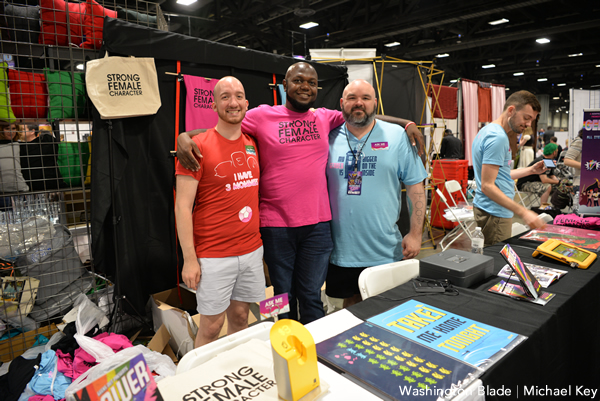
Pride Alley (Washington Blade photo by Michael Key)
a&e features
What’s new at Rehoboth Beach for summer 2024
Higher parking fees, Pamala moves to Diego’s, and more

Another Rehoboth Beach season is upon us. I have been going to the beach for more years than I can count, and always love it. Some now consider Rehoboth a year-round community, and in many ways they are right. But summer still brings out tens of thousands of tourists, from day-trippers, to those with second homes at the beach. Others book a weekend, or longer, at the many great hotels. They all come to the beach for the sun and sand, food, and drink. Some like to relax, others to party, and you can do both in Rehoboth.
So here is some of the good (and a little of the bad) of what’s new this season. First the bad: Parking at a meter will now cost you $4 an hour. Meters are in effect May 15-Sept. 15. Parking permits for all the non-metered spaces in town are also fairly expensive. You can find information on both transferable and individual permits, online.
Now for the good — and there is lots of it. First, Aqua Bar & Grill has reopened for the season. During Women’s Fest they were packed, with many sitting around the outdoor heaters, and that included lots of good looking men. I recommend taking advantage of the Tuesday Burger night. Then the Blue Moon just announced John Francis Flynn will be on the piano from May 26-June 26, Sunday to Thursday, 6-8:30 p.m. He will then be back again on the same schedule from July 30-Sept. 11. During July, Nate Buccieri returns to town for a month-long runs of shows.
My favorite place at the beach, The Coffee Mill, in the mews between Rehoboth and Baltimore Avenues, opens every morning at 7 a.m. Whenever I am at the beach I am there. Mel, who also owns Brashhh! on 1st Street, announced he is starting his own clothing line, called FEARLESS!
The Purple Parrot, is celebrating its 25th anniversary this year so be sure to spend some time there raising a glass. The Summer House last year opened the upscale Libation Room, with drinks like a Bacon Maple Old Fashioned. This year, they opened a nice garden looking out on Rehoboth Avenue, with a fountain. With the renewed interest in vinyl records you may want to stop in at Extended Play. Traveling a little beyond the town is the new 302 Local, located in Coastal Station behind Iron Hill Brewery. It is themed as a 1920s-era speakeasy. If you are in town on a Sunday for T-dance, you will have the chance to hear Pamala Stanley perform at Diego’s Bar and Nightclub. This is the perfect venue for Pamala’s talents in an indoor-outdoor setting that is already drawing packed crowds. Don’t miss it. Speaking of Diego’s, Pamala and Best Rehoboth Drag Queen winner Magnolia Applebottom are reunited there this summer. Don’t miss Magnolia’s Memorial Day Thursday party on May 23 from 8-10 p.m. featuring “naughtee bingo.”
If you are looking for culture Rehoboth has some of that as well. There’s Clear Space Theater on Baltimore Avenue. This year’s shows include The Bodyguard, The Roommates, Jersey Boys, Rock of Ages and The Prom. Tickets sell fast so I suggest you book early and they are available online. Then there is the Pride Film Festival, June 14-16. More information on that can be found at CAMP Rehoboth, the LGBTQ community center. CAMP plans the annual Sunfestival each Labor Day weekend, a not-to-miss event each year. On the CAMP website you can also find information on its speaker series, concerts, and other special events that will be going on during summer. This year Rehoboth Beach Pride takes place July 18-21. Sussex Pride is taking the lead on the festival, which will happen at the Convention Center July 20 from 10 a.m.-2 p.m. If you visit CAMP, or are just walking up Baltimore Avenue, make sure you pick up a copy of the Blade in the box in front of the building.
I would be remiss if I didn’t mention some of the other restaurants and clubs in town. Just a reminder, during season you often need reservations. Come to the beach often enough, and you can try them all: The Pines (and their Monday steak night) and Top of the Pines are at the epicenter of the fun on Baltimore Avenue. Freddie’s Beach Bar and Restaurant offers a busy summer of events and entertainment. Rigby’s remains a go-to spot for the LGBTQ community on Rehoboth Avenue. Bodhi Kitchen is back in its second year offering delicious modern Asian cuisine “with a twist.” These are only a few of the great places to eat and drink at the beach.
Remember to book your reservations for hotels and restaurants early. Rehoboth is a happening place and very busy. Here’s wishing you fun at the beach.
a&e features
‘RuPaul’s Drag Race: All Stars’ cast visits D.C.
8 queens vie for $200,000 prize for charity in new season, premiering May 17
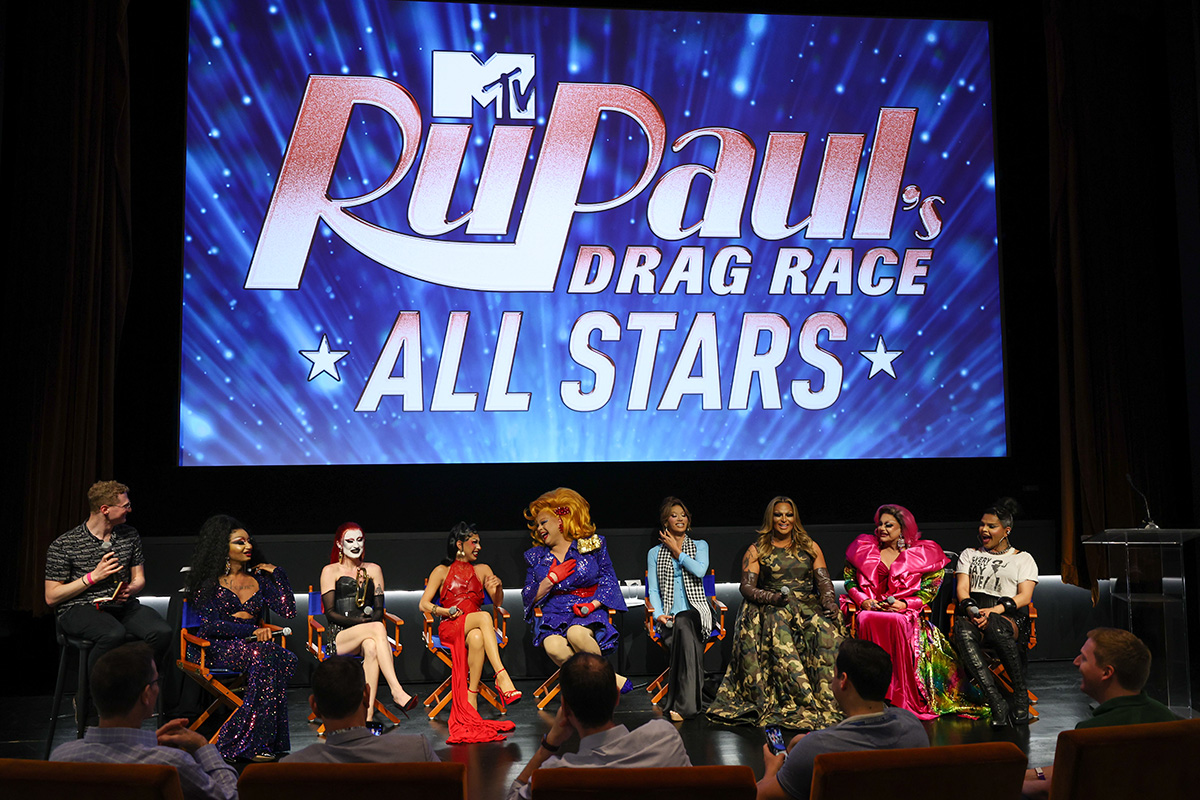
Donning sparkling and star-studded red, white, and blue attire on a gloomy, humid D.C. Monday, the cast of the latest “RuPaul’s Drag Race All Stars” season sashayed on the National Mall to promote the reality show’s ninth season.
This upcoming season is different than those in the past — eight queens are competing for a donation of $200,000 for the charity of their choosing, rather than a personal cash prize.
Several cast members noted how it felt important to visit the nation’s capital, being authentically themselves and wearing drag. Nina West, who competed in season 11, likened drag to armor.
“We’re here during a really specific time in history, that’s, I would say, markedly dark,” she told the Blade at the steps of the Lincoln Memorial. “And there’s an opportunity, as drag has always done, which is for our community as specifically LGBTQI+ people, to stand in our truth and be wonderful — like guardians and fighters for our community.”
She’s competing for the Trevor Project, which is focused on suicide prevention and crisis intervention for young LGBTQ people. This season’s pivot to compete for charity made Nina West want to come back on the show for the All Stars season. She’s been offered the spot two times before this, she said, and this twist aligned with what she wanted to do.
Several of the other queens mentioned that it’s an honor to be featured in this season, including season 5’s Roxxxy Andrews. She also competed in two subsequent All-Stars seasons.
She chose the organization Miracle of Love, which provides HIV/AIDS prevention programming and assistance in central Florida. It’s a smaller, more local organization, which is why Roxxxy Andrews chose it. She wants to make its work more nationally known. Also, vying to win during a charity season makes the competition feel more rewarding, she said.
Plastique Tiara of season 11 also noted it’s different competing for charity. She’s competing for the Asian American Foundation, which launched in 2021 in response to the rise in anti-Asian hate and aims to curb discrimination and violence through education and investments in nonprofits.
“It’s more competitive because then you’re fighting not just only for yourself, but your ideas and the things that you love,” she said.
Vanessa Vanjie of seasons 10 and 11 agreed that competing for charity adds a bit more pressure — she chose the ASPCA. And as onlookers near the Lincoln Memorial took pictures of and with the queens, she said she was relieved.
“I was a little bit worried somebody would yell some slurs at us,” Vanessa Vanjie said. “Nothing happened. Everybody came to take pictures like Santa Claus in the middle of the mall.”
There’s a range of contestants from different seasons for this round of All Stars. Some queens hail from recent seasons, but Shannel competed on the show’s first season. To be a part of this new season is surreal, she said.
She’s competing for the Anxiety and Depression Association of America, which she has a close tie to. She’s dealt with anxiety her entire life. The association is focused on increasing awareness and improving diagnosis and treatment.
“I always felt like I just wasn’t normal, sadly,” she said. “And so now being able to be able to do this season and to get back to that organization is like amazing to me.”
Gottmik, from season 13, is competing for Trans Lifeline — a nonprofit providing advocacy, a hotline and grants created by trans people, for trans people. Being able to do drag and give back is the “perfect scenario,” Gottmik said.
Gottmik was the first openly trans man on Drag Race, which was overwhelming when first on the show. Gottmik felt pressure to be the “perfect example,” but later realized that they didn’t have to worry so much.
“I just want to show people that trans people are real people. We can express ourselves however we want to express ourselves, through drag, through whatever it may be,” Gottmik said.
The new season will be available to stream on Paramount+ on May 17.
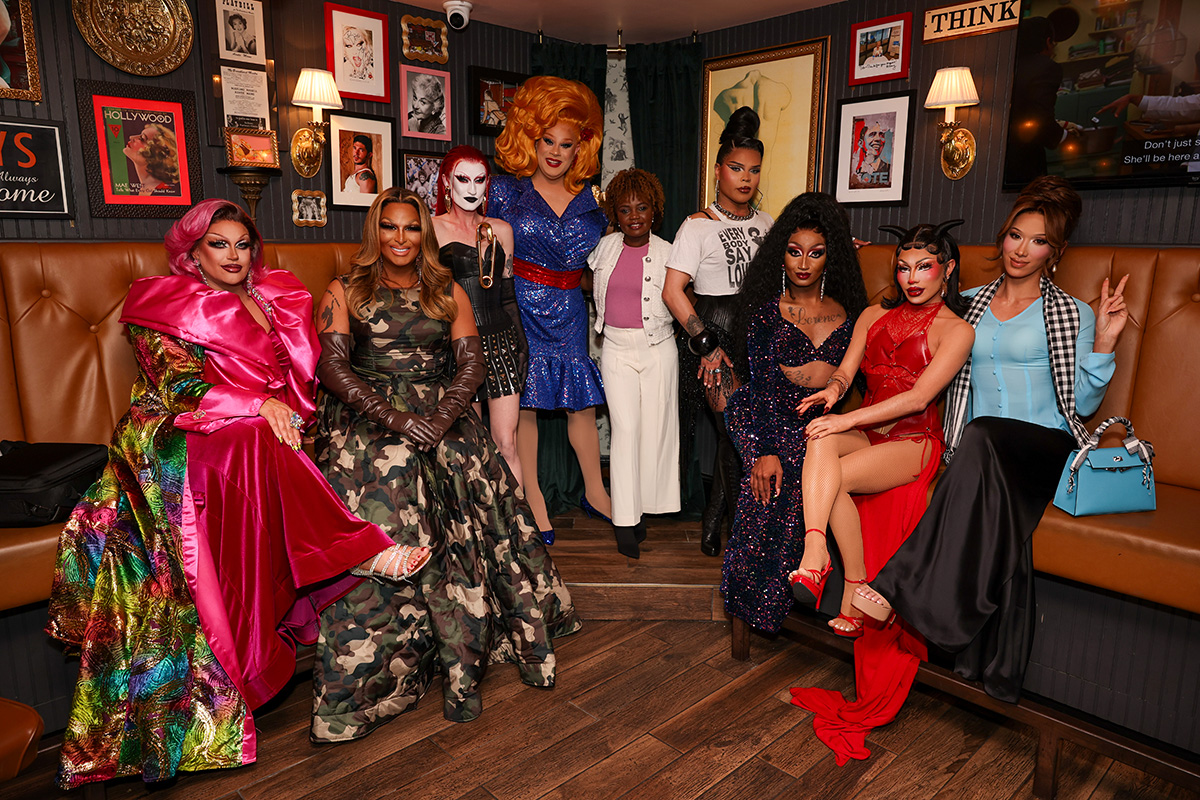
a&e features
Pride season has begun
LGBTQ parades, festivals to be held throughout region in coming months
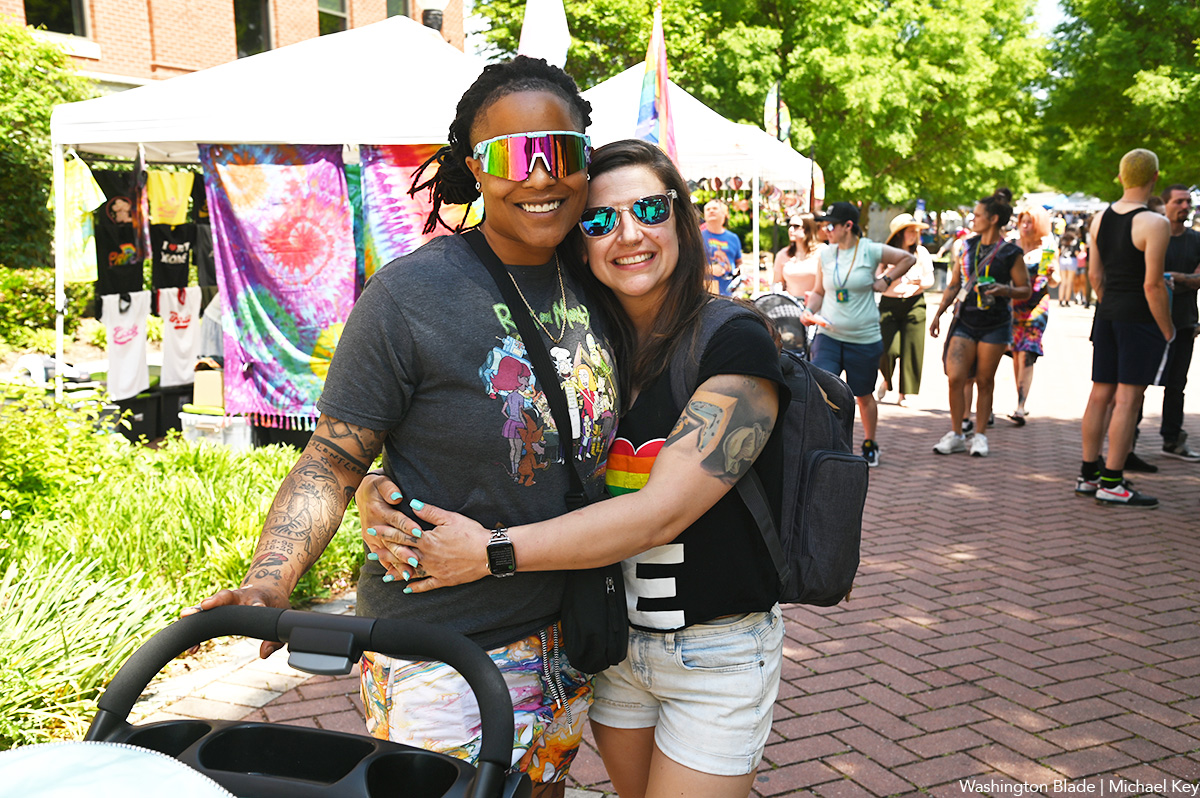
LGBTQ Pride festivals, parades and other events have been scheduled in large cities and small towns throughout the region. Pride events around the world culminate in June, but organizers in some municipalities have elected to hold celebrations in other months.
Pride in the region has already begun with last weekend’s Mr., Miss, and Mx. Capital Pride Pageant held at Penn Social as well as Roanoke Pride Festival held in Elmwood Park in Roanoke, Va.
Below is a list of Pride events coming to the region.
MAY
Capital Trans Pride is scheduled for 9:30 a.m.-5 p.m. on Saturday, May 18 at the Martin Luther King, Jr. Memorial Library (901 G St., N.W.). The website for the event advertises workshops, panel discussions, a keynote address, a resource fair and more. transpridewashingtondc.org
Equality Prince William Pride is scheduled for 12-4 p.m. on May 18 at the Harris Pavilion (9201 Center St.) in historic downtown Manassas, Va. equalityprincewilliam.org
D.C. Black Pride holds events throughout the city May 24-27. Highlights include an opening reception, dance parties and a community festival at Fort Dupont Park. The Westin Washington, DC Downtown (999 9th St., N.W.) is the host hotel, with several events scheduled there. dcblackpride.org
NOVA Pride and Safe Space NOVA will hold NOVA Pride Prom from 7-11 p.m. on May 31 at Torpedo Factory Art Center in Alexandria, Va. The event is open to all high school students throughout the region, regardless of identity, from rising ninth grade students to graduating seniors. novapride.org
Capital Pride Honors will be held on May 31. The Capital Pride Alliance has announced on its website that nominations are open for awardees. The Honors celebrates excellence in the LGBTQ community and its allies. capitalpride.org
JUNE
Downtown Sykesville Connection is sponsoring Sykesville Pride Day in downtown Sykesville, Md. on June 1 from 12-4 p.m. downtownsykesville.com
Reston Pride will be held at Lake Anne Plaza in Reston, Va. on June 1 from 12-6 p.m. restonpride.org
Fairfax Pride, hosted by the City of Fairfax and George Mason University, will be held at Old Town Hall (3999 University Drive, Fairfax, Va.) on June 1 from 5-7 p.m. The event will include children’s activities and more. fairfaxva.gov
OEC Pride celebrates Pride with “art, dance, education, and fun” in Old Ellicott City. The OEC Pride Festival is held along Main Street in Ellicott City, Md. on June 1 from 10 a.m.-10 p.m. visitoldellicottcity.com
Annapolis Pride has consistently drawn a giant crowd for a parade and festival in the quaint downtown of the Maryland capital. “The Voice” star L. Rodgers has been announced to headline the 2024 festival. The parade and festival will be held on June 1. annapolispride.org
The Alexandria LGBTQ+ Task Force Alexandria Pride is scheduled to be held at Alexandria City Hall from 3 – 6 p.m. on June 1 in Alexandria, Va. alexandriava.gov
The Portsmouth Pride Fest will be held at Festival Park adjacent to the Atlantic-Union Bank Pavilion in Portsmouth, Va. on June 1 from 11 a.m.-5 p.m. portsmouthprideva.com
The Delaware Pride Festival is a free event scheduled for June 1 at Legislative Hall in Dover, Del. from 10 a.m.-5 p.m.The event is billed as family friendly and open to people of all ages and sexual orientations. delawarepride.org
The City of Rockville is hosting Rockville Pride at Rockville Town Square (131 Gibbs St., Rockville, Md.) from 2-5 p.m. on June 2. The free event features live performances, information booths, and children’s activities. rockvillemd.gov
Equality Loudoun is hosting the ticketed Loudoun Pride Festival from 1-7 p.m. on June 2 at Claude Moore Park in Sterling, Va. The event features three stages, a “#Dragstravaganza,” a kid’s zone, an alcohol pavilion, a food hall and more. Tickets $5. eqloco.com
Culpepper Pride is slated to be held at Mountain Run Winery in Culpepper, Va. from 12-6 p.m. on June 2. The theme this year is “True Colors.” culpeperpride.org
The Southwest Virginia Pride Cookout Community Social is planned for 2 p.m. at the Charles R. Hill Senior Center in Vinton, Va. on June 2. For more information, visit the Facebook event page.
Capital Pride kicks off with the RIOT! Opening Party at Echostage starting at 9 p.m. on June 7. Tickets run from $27-$50 and can be purchased on the Capital Pride website. The event is set to feature Sapphire Cristál. capitalpride.org
Pride events continue over the weekend of June 8-9 in the nation’s capital with the Capital Pride Block Party featuring performers and a beverage garden, the massive Capital Pride Parade, Flashback: A totally Radical Tea Dance to be held at the end of the parade route, and the Capital Pride Festival and Concert. Visit capitalpride.org for more information. Other Pride events planned for the weekend in D.C. include a number of parties and the unforgettable (and free) Pride on the Pier & Fireworks Show at the Wharf sponsored by the Washington Blade from 2-10 p.m. prideonthepierdc.com
Pride in the ‘Peake will be held at Summit Pointe (580 Belaire Ave.) in Chesapeake, Va. on June 9 from 12-5 p.m. The family-focused Pride event does not serve alcohol, but will feature community organizations, food trucks and more in a street festival. For more information, visit the Facebook event page.
Celebrate with a drag show, dancing and a lot of wine at Two Twisted Posts Winery in Purcellville, Va. for a Pride Party from 2-5 p.m. on June 15. twotwistedposts.com
Baltimore Pride holds one of the largest Pride parades in the region on June 15 in Baltimore. (2418 Saint Paul St.). The parade concludes with a block party and festival. Pride events are scheduled from June 14-16. baltimorepride.org
The fourth annual Catonsville Pride Fest will be held at the Catonsville Presbyterian Church (1400 Frederick Rd.) in Catonsville, Md. on June 15 from 3-6 p.m. The event features a High Heel Race, pony rides, face painting, local cuisine and more. For more information, visit the Facebook event page.
The Ghent Business District Palace Shops have announced a Ghent Pride event from 5:30-9:30 p.m. on June 17 at the Palace Shops and Station (301 W 21st Street) in Norfolk, Va. ghentnorfolk.org
An event dedicated to celebrating the elders in the LGBTQ community, Silver Pride is scheduled for June 20 at 5:30-8:30 p.m. Location and more information to be announced soon. capitalpride.org
Visit the Hampton Roads PrideFest and Boat Parade for a truly unique Pride experience along the Elizabeth River. The full day of entertainment, education and celebration will be held on June 22 from 12-7 p.m. at Town Point Park (113 Waterside Dr.) in Norfolk, Va. hamptonroadspride.org
Frederick, Md. will hold its annual Frederick Pride Festival at Carroll Creek Linear Park on June 22 from 11 a.m.-6 p.m. Entertainers include CoCo Montrese of “RuPaul’s Drag Race.” frederickpride.org
The fourth annual Pride at the Beach is scheduled for 2-10 p.m. on June 23 at Neptune’s Park (3001 Atlantic Ave.) in Virginia Beach, Va. The event features entertainment, community vendors, beachside DJ sets, food trucks and offers a “perfect conclusion to an unforgettable Pride weekend.” hamptonroadspride.org
Winchester Pride will hold its Mx. Winchester Pride Pageant at 15 N. Loudoun St. in Winchester, Va. on June 23 at 6 p.m. Tickets are $20 in advance/$25 at the door. winchesterpride.com
The organizers of last year’s inaugural Ocean City Pride with a “parade” along the boardwalk in Ocean City, Md. have announced that they will be organizing a return this year with events from June 28-30. instagram.com
The third annual Arlington Pride Festival will be held at Long Bridge Park at National Landing (475 Long Bridge Dr.) in Arlington, Va. on June 29 from 11 a.m.-3 p.m. arlvapride.com
FXBG Pride is holding its annual community Fredericksburg Pride March on June 29 from 10-11 a.m. at Riverfront Park (705 Sophia St.) in Fredericksburg, Va. Speeches begin at 10 a.m. and the procession starts at 10:30 a.m. For more information, visit the Facebook event page.
Salisbury Pride “90’s Edition” is scheduled for 3 – 7 p.m. on June 29 in Downtown Salisbury, Md. Magnolia Applebottom is listed as the headliner and grand marshal. salisburyprideparade.com
The 2024 Suffolk Pride Festival is scheduled for Bennett’s Creek Park in Suffolk, Va. on June 30 from 12-7 p.m. Visit the Facebook event page for more information.
Expect music, entertainment and drag performances in the picturesque mountain town of Cumberland, Md. at the Cumberland Pride Festival on June 30 from 12-4 p.m. at Canal Place. cumberlandpride.org
Montgomery County’s annual Pride in the Plaza will be held on June 30 from 12-8 p.m. at Veterans Plaza (1 Veterans Place, Silver Spring, Md. liveinyourtruth.org
JULY
The sixth annual Westminster Pride Festival is scheduled for downtown Westminster, Md. on July 13 from 12-6 p.m. westminsterpride.org
Hagerstown Hopes is holding its annual Hagerstown Pride Festival in Doubs Woods Park (1307 Maryland Ave.) in Hagerstown, Md. on July 13 at 11 a.m. Visit the Facebook event page for more information.
The Rehoboth Beach Pride Festival will be held on July 20 from 10 a.m.-2 p.m., with other Sussex Pride events scheduled throughout the weekend of July 18-21. sussexpride.org
Us Giving Us Richmond hosts Black Pride RVA in Richmond, Va. with events on July 19-21. ugrcrva.org
-

 South America3 days ago
South America3 days agoPeruvian government classifies transgender people as mentally ill
-

 Autos1 day ago
Autos1 day agoSeductive sport-utes: Buick Evista, Subaru Outback
-
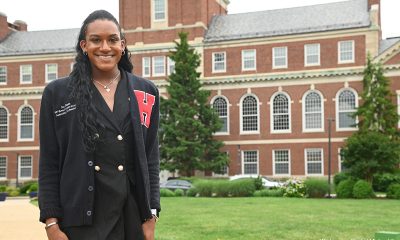
 District of Columbia4 days ago
District of Columbia4 days agoMeet Jay Jones: Howard’s first trans student body president
-
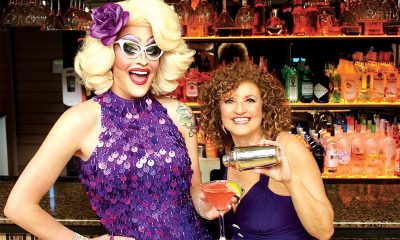
 a&e features4 days ago
a&e features4 days agoWhat’s new at Rehoboth Beach for summer 2024

